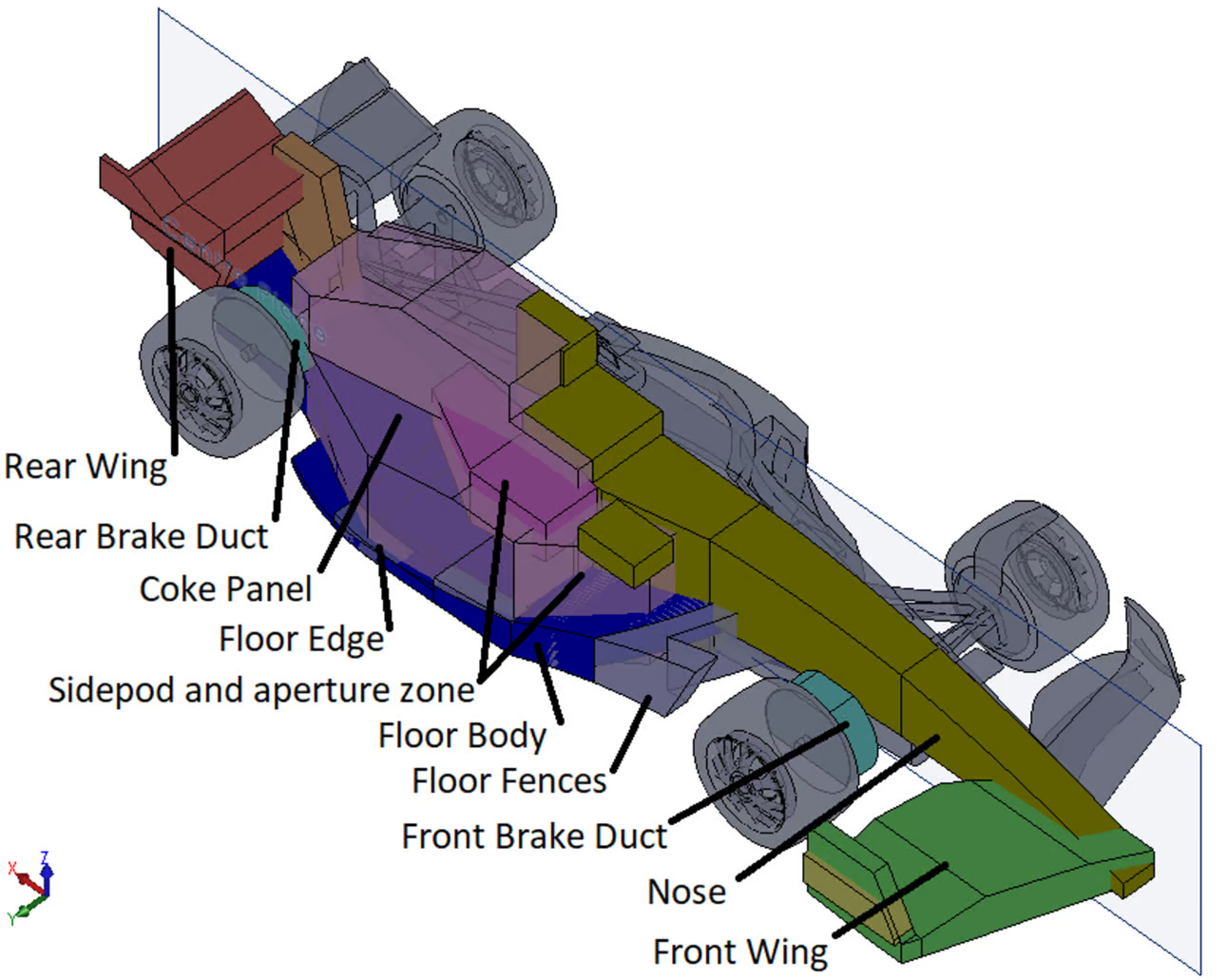A sidepod on an F1 car is basically this big bulge you see on the sides, right next to the driver’s seat. It stretches back towards the engine. Side pods do two major jobs:
👉 Cooling important parts like the engine and electronics
👉 Managing airflow for better speed and stability on the track

Transformation of Formula 1 Sidepods Over the Years
Sidepods have been a key part of race cars for a long time. Initially, the cars had high sidepods to help push air to the rear wing, making the car more aerodynamic.
But then, designers started trying out lower sidepods because they found out it cut down on drag and made the car faster. There are also rules about how big and what shape the sidepods can be, so teams have to think about aerodynamics and keeping the engine cool, all while following these rules.
Now, sidepods are super important in a Formula One car, and they keep getting better as teams look for ways to be more aerodynamic and cool the engine more efficiently.
One of the biggest changes was lowering the sidepods in the 1980s. This helped reduce drag, making cars faster and easier to handle. Another big step was using more complex parts inside, like heat exchangers, to cool things down better.
In 2022, Formula 1’s new regulations drastically changed car designs, particularly the sidepods, due to the ban on bargeboards, which were crucial for airflow management and downforce.
Teams like Ferrari and Red Bull came up with innovative designs to adapt to these changes. This highlighted the importance of sidepod design in overall car performance while also considering other design aspects and development costs.
Different Sidepods in Formula One
Teams in F1 have their own styles of sidepods, each with unique designs and features. Some go for the basic standard sidepods that fit the rules about size and shape. Others go all out with extra aerodynamic features. Here are some of the different types:
📏 Standard Sidepods
- Basic and regulatory-compliant
- Houses the radiator for engine cooling
- Variations in size and shape for track-specific requirements
🦈 Shark Fins
- Aerodynamic feature at the car’s rear
- Aims to reduce drag and increase downforce
- Different sizes and designs depending on the team’s strategy
🕊️ T-Wings
- Located at the rear for enhanced aerodynamics
- Focuses on increasing downforce for better speed and handling
- Small, lightweight, with varying levels of complexity
Car Cooling with Sidepods: Key Points
🌬️ Sidepods’ Role: Direct airflow to radiators, crucial for maintaining engine temperature.
🌡️ Radiator Basics: Transfer heat from coolant to air; a process similar in F1 and road cars.
🏎️ F1 Car Radiators: Located in sidepods near the rear engine; larger than road car radiators.
💨 Hot Air Ejection: Expelled from the car to prevent overheating, using exhaust systems and cooling slats.
🛠️ 2022 F1 Designs: Focus on efficiently managing hot air from sidepods for aerodynamic stability.




